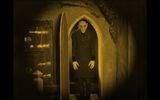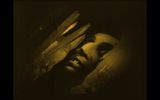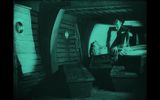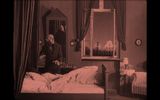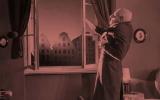SPOILERS

| Added | Sat, 18/11/2017 |
| Release date | 17-02-1922
|
| Original title | Nosferatu, eine Symphonie des Grauens
|
| Феномены | |
| References |
The plot of the film by German silent film director Friedrich Wilhelm Murnau "Nosferatu. Symphony of Horror", filmed in 1921 and released on big screens in February 1922, is in many ways similar to the plot of Bram Stoker's novel "Dracula", of which it is an implicit film adaptation. Due to the refusal of Stoker's widow to sell the rights to the film adaptation of the novel, the main characters of the film are renamed analogues of the main characters of the book: Jonathan and Mina Harker, as well as Count Dracula himself. The time and place of action have also changed: instead of England in the 1890s, the plot of the film unfolds in Germany, close to the director, and for some reason in 1838. Unfortunately, all these tricks did not save the film from the attacks of Stoker's widow, as a result of which only a few original copies survived.
Interestingly, it was this film that gave rise to a stable idea of the ruinousness of sunlight for vampires, whereas in the original novel sunlight only weakened Dracula.
The film "Nosferatu. Symphony of Horror", filmed in 1921 and released on big screens in February 1922, gave rise to a stable idea of the ruinousness of sunlight for vampires, whereas in the original novel sunlight only weakened Dracula
In the movie "Nosferatu. Symphony of Horror" (1922) the vampire, unlike the image we are familiar with, has long sharp front teeth (as, for example, rabbits, ground squirrels and hamsters), and not fangs. Despite this, this image has become, though not a classic for vampires, but a cult one.
Thomas Hutter, a real estate agent, learns from his boss Knocka that a certain Count Orlok wants to buy a house in Visborg. After saying goodbye to his fiancee Helen, Hutter goes to distant Transylvania. In Romania, he encounters the strange fears of the locals, but treats them as empty superstitions.
The coachman refuses to take the Hutter to the castle and drops him off at the pass, where "the land of ghosts begins." Here he is met by a carriage sent from the castle, which takes him further with incredible speed. In the castle, Hutter is met by a creepy owner who looks and habits more like a rat than a person. They sign the documents, and Orlok shows Hutter his bedroom. The count also draws attention to the medallion with a portrait of Helen — he is clearly impressed by her beauty. At night, the Orlok, as if in a trance, attacks the Hutter and bites him. In the afternoon, Hutter goes down to the basement and finds Orloc lying in a coffin. That same night, he sees from the window how Orlok, showing incredible strength and skill, alone loads several coffins onto a cart and leaves. Hutter manages to escape.
Helen, who remained in Visborg, feeling that her beloved is in trouble, falls into a state of sleepwalking — she somehow finds herself mentally connected with her husband, and through him - with Orlok. At this time, Knok goes crazy, he is placed in a psychiatric hospital, but he escapes from there, causing a commotion in the city and shouting that the Owner is approaching.
Orlok infiltrates a ship going to Visborg by hiding in one of the boxes. At night he gets up from his coffin and attacks the sailors. By the time the ship arrives in Visborg, there are no living crew members left on it. In Visborg, the vampire gets off the ship and settles in the house he bought, which is located opposite the house of Thomas and Helen. Thomas returns to Helen, beside himself with happiness.
Soon a whole wave of deaths hits Visborg. Coffins are carried down the street one by one. Helen, having learned the story of Thomas and having read the book he brought about vampires, decides to risk her own life: the book says that an innocent woman can intoxicate a vampire with blood to such an extent that he will not notice the sunrise. She lures Orloc to her, who has been looking at her for a long time, and allows him to drink her blood. The vampire falls asleep and does not have time to hide in his basement before dawn — he disappears under the burning rays of the rising sun.
Phenomena in artwork: A vampire
Vampire is the main antagonist of the tape. This character is not only greatly influenced people's ideas about vampires , but also served as the basis for the images of vampires in many subsequent books and films.
In contrast to the usual image of the vampire, Nosferatu is reflected in the mirror, turns into a dog (wolf, hyena), but not in bat, and has long, sharp front teeth (e.g., rabbits, ground squirrels and hamsters), but not the fangs. In the film, he may also appear in the form of a translucent ghostly figure.
This film gave rise to extant notions of destructiveness for vampires to sunlight, their supernatural physical strength and abilities of telekinesis.
Like Dracula in Stoker's book, Nosferatu can not survive for long in a foreign land without brought of the land, but in the book it was only the mother earth that gave him force, and the film is already a cursed land with live plague-infected rats in which he was buried.
Shadow of the vampire also has a special power. It gives rise to nightmares and a depressing state of mind from the accident, who falls.
Somehow count Orlok can affect people at a distance, to enter into a trance and mentally to call. So, Helen began to feel his approach after he saw her portrait, although up to this point no interaction between them was not
Translated by «Yandex.Translator»
Phenomena in artwork: Werewolf
The lycanthropy in the film is represented by the ability of a vampire to transform. In particular, count Orlok was hunting horses in the vicinity of the village in the guise of creepy doglike creature. For the filming of this episode used the hyena, because it has a specific appearance that are unusual for people of that time.
Translated by «Yandex.Translator»
Count Orlok, in the guise of a wolf
Translated by «Yandex.Translator»
Log in or register to post comments
